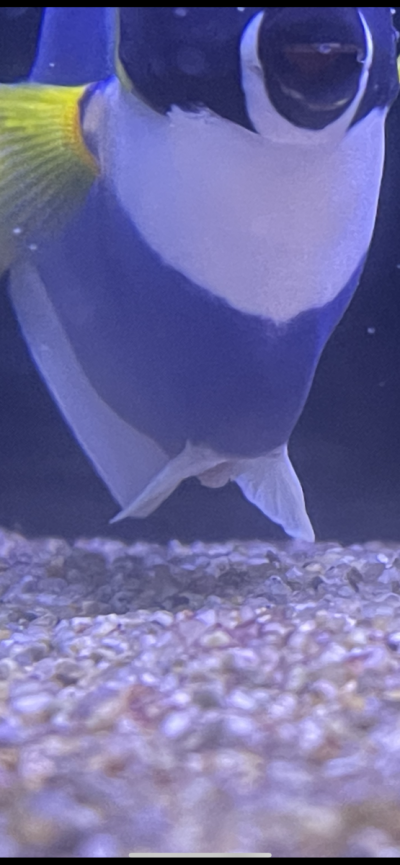@Jay Hemdal
So I could possibly be dealing with two independent issues.
One related to an intestinal abnormality or foreign body, or infection of reproductive system.
And a bacterial infection that appears to be affecting the lateral line region of the specimen.
As this is a newly acquired specimen handled during collection with degassing of swim bladder, using a hypodermic needle. Normally, this is inserted at the region of the anus. I would imagine that it’s possible these issues could be correlated from common bacterial infection, originating from needling, your thoughts?
I cannot see the prolapse in the video, but I can see the elongate lesion above the lateral line. this fish is also breathing too fast.
How do you know the fish was vented through the anus? - commercially collected fish are not vented through the anus, they are de-gassed directly through the side of the fish into the swim bladder. If you went in through the anus, you'd have to go through intestines to reach the swim bladder, virtually assuring peritonitis. Venting through the side only hits muscle tissue, so there is less chance of infection.
Jay





















